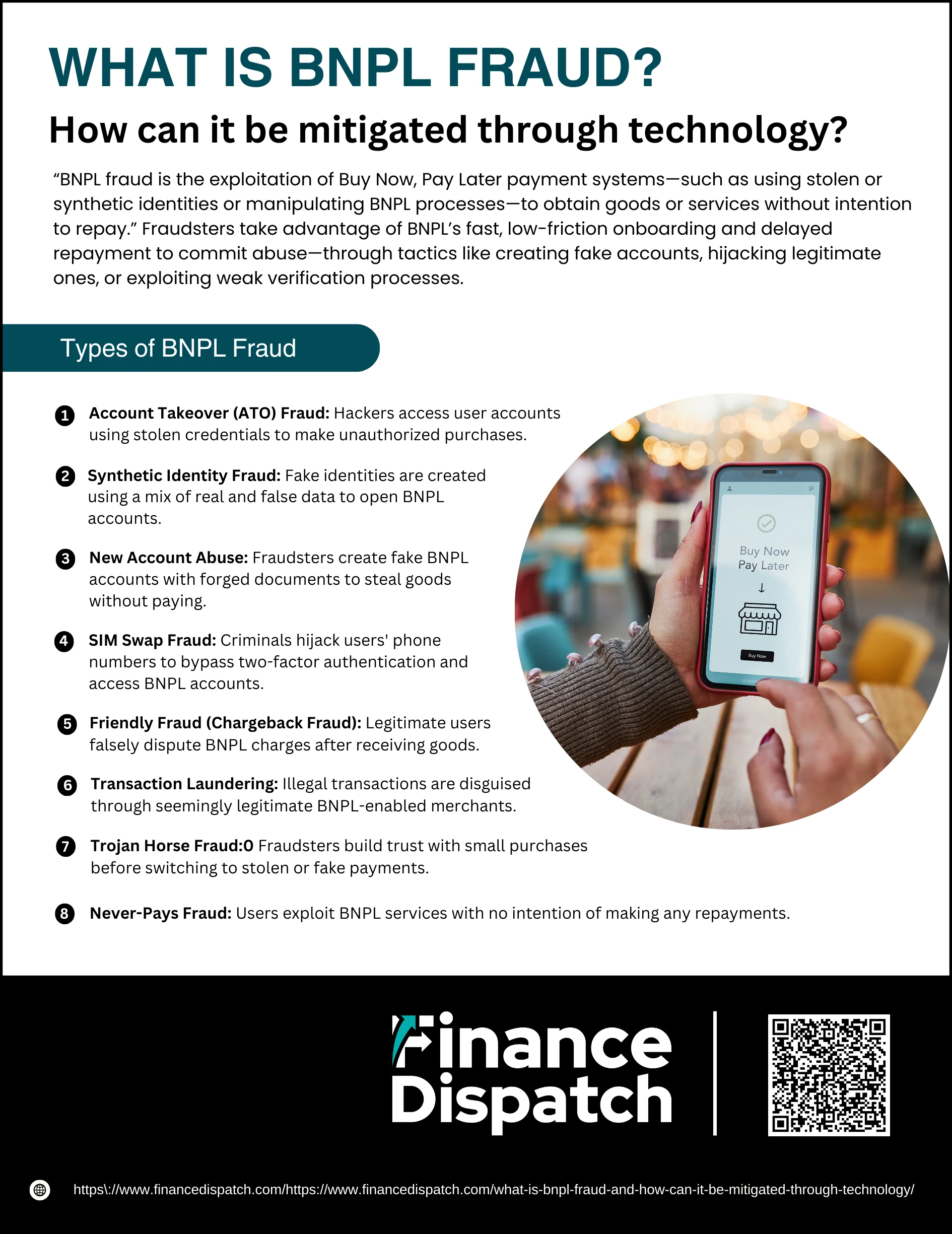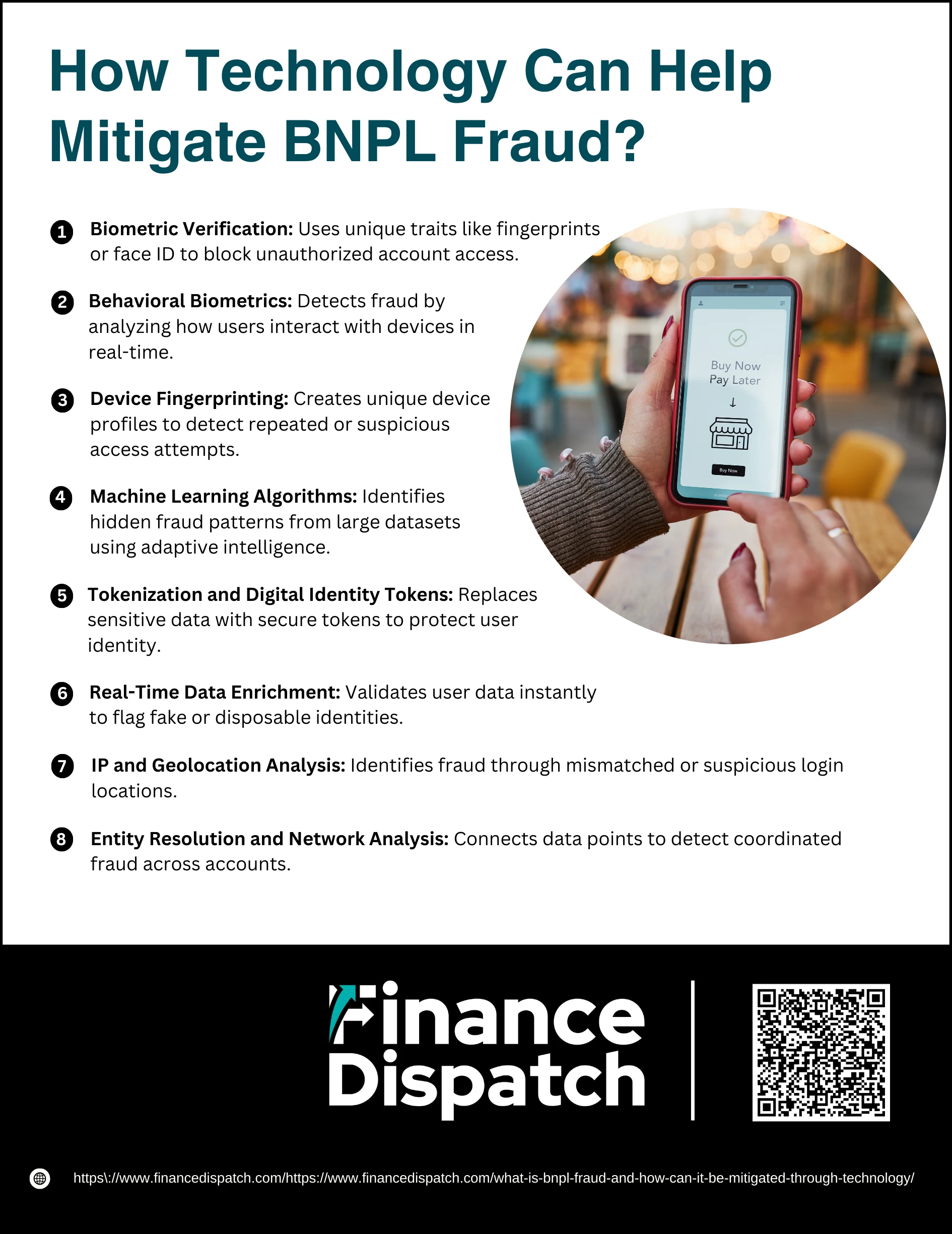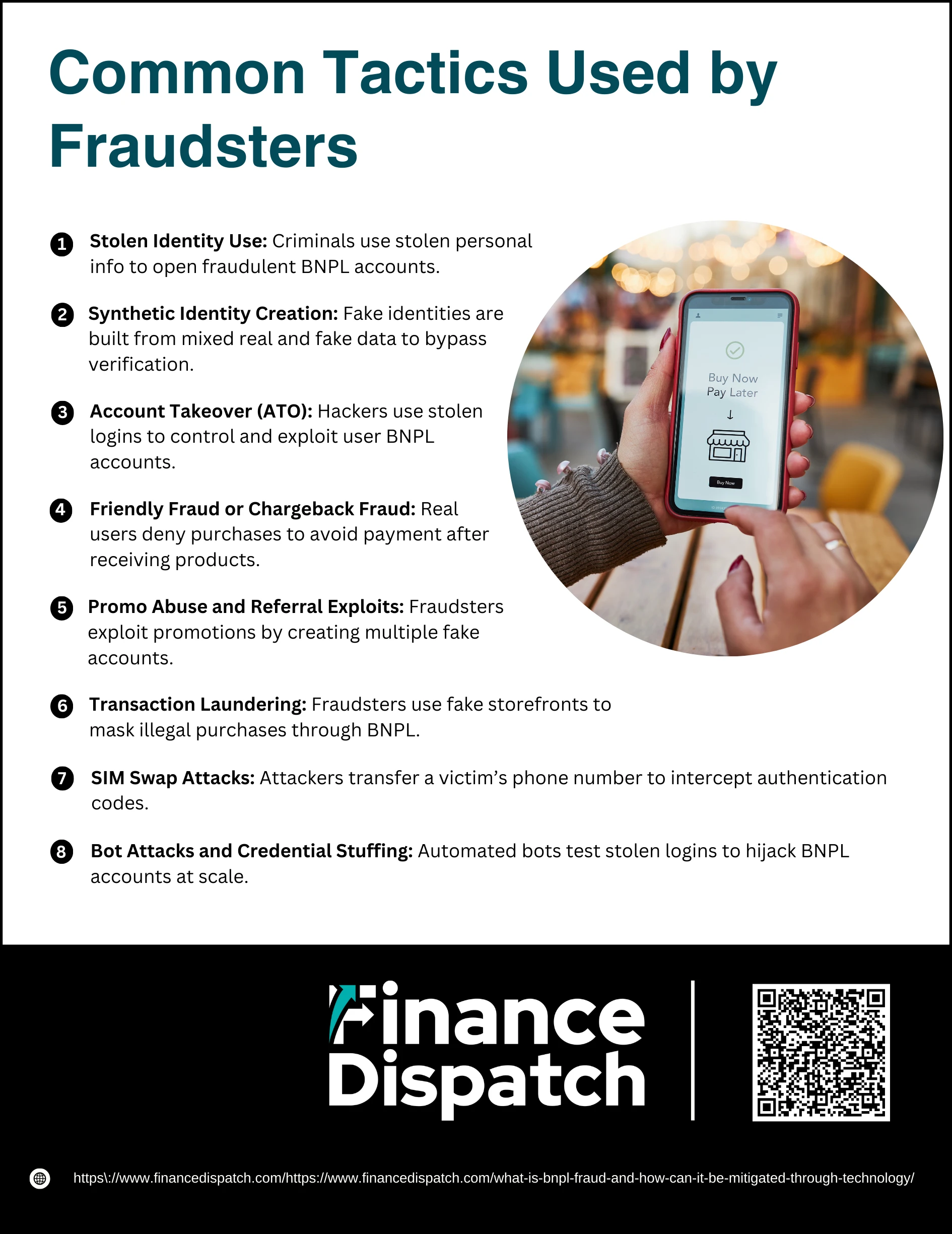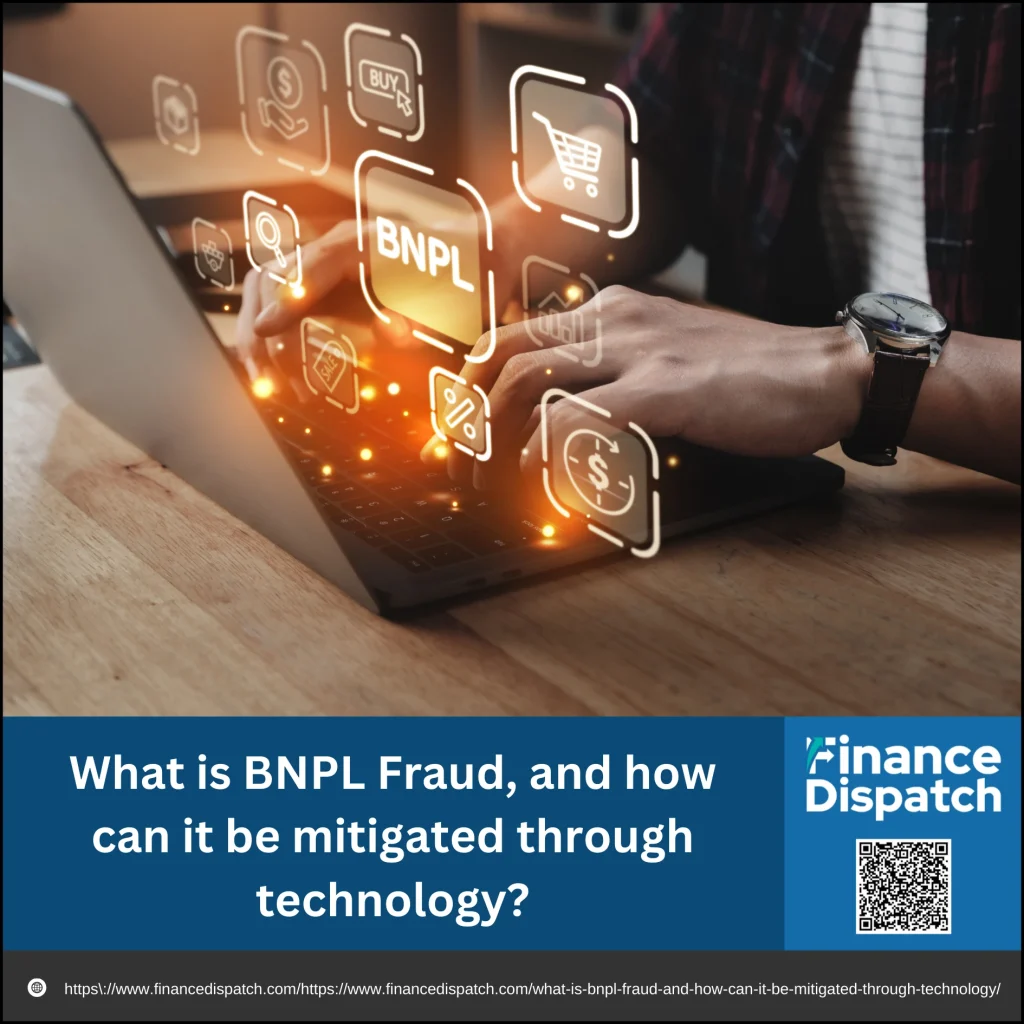Buy Now, Pay Later (BNPL) has rapidly transformed the digital payments landscape, offering consumers a flexible and interest-free way to shop online or in-store. From everyday items to big-ticket purchases, millions of users now embrace BNPL services for their convenience and accessibility. However, this surge in popularity has also attracted a growing wave of fraudsters who exploit loopholes in onboarding processes, delayed payment cycles, and lax identity verification measures. As a result, BNPL fraud has emerged as a serious concern for consumers, merchants, and service providers alike. This article explores the different types of BNPL fraud, their implications, and how advanced technologies such as biometrics, machine learning, and digital identity verification can help detect and prevent these risks—without sacrificing the seamless customer experience that makes BNPL so appealing.
What is BNPL Fraud?
BNPL fraud refers to deceptive and unauthorized activities that exploit the Buy Now, Pay Later payment model for financial gain. Fraudsters take advantage of the minimal credit checks, real-time approvals, and easy onboarding processes that BNPL services often offer. These criminals may use stolen or synthetic identities to create fake accounts, hijack legitimate user accounts through credential theft, or manipulate transactions to avoid repayment. The nature of BNPL—delivering goods or services before full payment is made—creates a window of opportunity for fraud to occur unnoticed. As a result, both consumers and businesses face significant financial losses, reputational damage, and operational disruptions when BNPL fraud is left unchecked.
 Types of BNPL Fraud
Types of BNPL Fraud
As Buy Now, Pay Later (BNPL) services continue to grow in popularity, so too does the risk of fraud targeting this flexible payment method. Fraudsters are constantly developing new tactics to exploit the BNPL ecosystem, taking advantage of its quick approvals and limited identity verification processes. Understanding the different types of BNPL fraud is the first step toward building effective prevention strategies.
Here are the most common types of BNPL fraud:
1. Account Takeover (ATO) Fraud
In this scheme, cybercriminals gain unauthorized access to a legitimate user’s BNPL account, often through phishing, password cracking, or data breaches. Once inside, they make fraudulent purchases while the actual user remains unaware.
2. Synthetic Identity Fraud
This involves the creation of fake identities using a blend of real and fabricated information. These synthetic profiles can pass verification checks and open BNPL accounts, which are then used to make purchases that are never repaid.
3. New Account Abuse
Fraudsters use stolen or forged documents to create entirely fake BNPL accounts. These accounts are exploited to obtain products or services with no intention of repayment, resulting in direct losses to providers and merchants.
4. SIM Swap Fraud
In this technique, attackers trick a mobile provider into transferring a user’s phone number to a new SIM card under their control. This allows them to intercept SMS-based verifications and access BNPL accounts.
5. Friendly Fraud (Chargeback Fraud)
A legitimate customer makes a purchase using BNPL, receives the goods, and then disputes the transaction, falsely claiming they never received the item or did not authorize the purchase.
6. Transaction Laundering
Criminals disguise the nature of transactions by routing payments through legitimate-looking BNPL-enabled merchants, masking illegal activities such as the sale of prohibited goods or services.
7. Trojan Horse Fraud
Fraudsters gain trust by making small, legitimate purchases through BNPL, then later switch to stolen payment methods or escalate fraudulent activity once their account appears credible.
8. Never-Pays Fraud
This type of fraud involves users—real or fake—who take advantage of the BNPL system to acquire goods or services and then intentionally avoid all future payments.
 How Technology Can Help Mitigate BNPL Fraud
How Technology Can Help Mitigate BNPL Fraud
The surge in BNPL adoption has unfortunately made these platforms attractive targets for fraudsters. From account takeovers to synthetic identity creation, fraud can undermine trust, result in financial losses, and trigger regulatory consequences. However, modern fraud tactics demand modern defenses. By integrating advanced technologies into the BNPL ecosystem, providers can proactively detect and prevent fraudulent activity—without introducing friction that turns away legitimate customers. These tools work silently in the background, continuously learning, adapting, and evolving to stay one step ahead of cybercriminals.
Below are some of the most effective technologies helping to combat BNPL fraud:
1. Biometric Verification
Biometric verification uses unique physical traits—such as fingerprints, facial structure, or voice—to authenticate users. Unlike passwords or PINs that can be stolen or guessed, biometric data is nearly impossible to duplicate. BNPL platforms that integrate biometric identity verification at sign-up or login can significantly reduce the chances of unauthorized access, especially in account takeover scenarios.
2. Behavioral Biometrics
This technology monitors how users interact with a platform—their typing speed, swipe dynamics, mouse movements, and even how they hold a phone. These patterns are unique to each person. Any deviation from normal behavior can signal potential fraud, such as a bot or an impersonator, and prompt additional verification without interrupting the experience for genuine users.
3. Device Fingerprinting
Device fingerprinting captures data about a user’s device, including browser configuration, operating system, plugins, and screen resolution. This fingerprint creates a unique profile of the device. If multiple accounts are accessed from the same suspicious device or if a known fraudulent device attempts access, the system can automatically block or flag the activity.
4. Machine Learning Algorithms
Machine learning (ML) models analyze massive datasets to identify fraud patterns that would be invisible to human analysts. These algorithms adapt over time, learning from past fraudulent behavior and detecting subtle correlations—such as an unusual combination of email address and shipping location—making it harder for fraudsters to stay under the radar.
5. Tokenization and Digital Identity Tokens
Tokenization replaces sensitive personal information with a secure digital token that can be safely stored or shared. Some systems use irreversibly transformed biometric tokens (like Trust Stamp’s IT2), which enable authentication without exposing the original biometric data. This ensures privacy while maintaining strong identity protection.
6. Real-Time Data Enrichment
Data enrichment tools validate information such as email addresses, phone numbers, and social media profiles in real-time. For instance, an email address created just minutes before signing up for a BNPL account can be flagged as suspicious. This provides context that helps identify synthetic or throwaway accounts used in fraud schemes.
7. IP and Geolocation Analysis
Tracking the IP address and physical location of users helps identify red flags—such as logins from countries where the user has never shopped or access from known proxy servers. Inconsistencies between billing, shipping, and IP address locations can signal account hijacking or cross-border fraud.
8. Entity Resolution and Network Analysis
This advanced analytical technique connects data points—like names, addresses, devices, and payment methods—to uncover hidden links between accounts or users. If several accounts are being used in a coordinated fashion to abuse BNPL promotions or conduct chargeback fraud, entity resolution can expose the pattern and stop the networked fraud before it escalates.
How BNPL Fraud Impacts Stakeholders
BNPL fraud doesn’t just hurt one party—it creates a ripple effect that impacts all stakeholders involved in the transaction ecosystem. From unsuspecting consumers whose accounts are hijacked, to merchants dealing with lost inventory and chargebacks, and BNPL providers facing credit risk and reputational damage—the consequences are both financial and operational. Understanding how each group is affected helps highlight the urgency of adopting effective fraud prevention strategies.
Here is a table outlining the specific impacts of BNPL fraud on key stakeholders:
| Stakeholder | Impact of BNPL Fraud |
| Consumers | – Unauthorized transactions on their accounts – Loss of trust in digital payments – Damaged credit score if fraud goes undetected – Time and stress spent resolving fraudulent activity |
| Merchants | – Lost merchandise and chargeback costs – Increased transaction disputes – Reputational damage and loss of customer trust – Higher fraud management costs |
| BNPL Providers | – Direct financial losses from unpaid credit – Rising cost of fraud mitigation and compliance – Regulatory scrutiny and legal risks – Erosion of market confidence and user growth |
| Financial Institutions | – Increased liability for chargebacks and fraud claims – Difficulty in managing risk for BNPL-backed credit – Exposure to systemic fraud trends across providers |
| Regulators | – Pressure to implement stronger consumer protection – Growing concern over underregulated digital lending models – Responsibility to balance innovation and financial safety |
 Common Tactics Used by Fraudsters
Common Tactics Used by Fraudsters
The rapid rise of Buy Now, Pay Later (BNPL) services has opened new doors for both convenience and exploitation. While consumers enjoy easy access to credit and flexible payments, fraudsters see BNPL platforms as an opportunity to bypass traditional safeguards. The nature of BNPL—fast approvals, limited credit checks, and delayed payments—makes it an attractive target for a wide range of fraudulent schemes. Understanding these tactics is essential for building effective prevention strategies and protecting users, merchants, and providers from financial loss.
Here are the most common fraud tactics used to exploit BNPL systems:
1. Stolen Identity Use
Criminals obtain personal details such as names, addresses, Social Security numbers, and phone numbers from data breaches or phishing scams. They use this stolen information to create BNPL accounts and make purchases—leaving the real identity owner to discover the fraud only after charges appear or debt collectors come calling.
2. Synthetic Identity Creation
Unlike simple identity theft, synthetic identity fraud involves crafting entirely new identities by blending real data (e.g., a legitimate SSN) with fabricated information like fake names or addresses. These profiles often pass initial verification checks and build a credible-looking history, allowing fraudsters to borrow, spend, and vanish before detection.
3. Account Takeover (ATO)
In ATO fraud, attackers hijack legitimate BNPL user accounts using stolen login credentials or phishing tactics. Once inside, they can change shipping addresses, make unauthorized purchases, and often go unnoticed until the user reviews their account history or payment reminders start arriving.
4. Friendly Fraud or Chargeback Fraud
This occurs when real customers misuse the system by buying products through BNPL and then disputing the transaction—claiming it was unauthorized or that the goods weren’t delivered. In some cases, family members make purchases on shared devices, giving rise to disputes that providers struggle to resolve.
5. Promo Abuse and Referral Exploits
Fraudsters take advantage of BNPL marketing campaigns by creating multiple fake accounts to redeem referral bonuses, promo codes, or introductory offers repeatedly. While not always criminal in nature, this abuse leads to financial losses and distorted marketing performance metrics.
6. Transaction Laundering
Also known as “undisclosed aggregation,” this involves routing illicit payments through seemingly legitimate BNPL merchants. Hidden storefronts process transactions on behalf of unregistered or illegal sellers, masking the true nature of the purchase and bypassing BNPL risk controls.
7. SIM Swap Attacks
A SIM swap attack occurs when fraudsters impersonate a user and trick mobile providers into transferring their phone number to a new SIM card. This allows the attacker to intercept one-time passcodes (OTP) and verification messages, gaining full access to BNPL accounts secured via SMS-based two-factor authentication.
8. Bot Attacks and Credential Stuffing
Using automated bots, attackers test thousands of stolen or leaked usernames and passwords on BNPL platforms in a short time. Once they gain access, they can exploit the account before security systems detect abnormal activity—often making multiple purchases or altering account details within minutes.
Challenges in Detecting BNPL Fraud
As BNPL services continue to gain traction among consumers, fraud detection becomes increasingly complex. The very features that make BNPL attractive—instant approvals, minimal friction, and quick onboarding—also create blind spots that fraudsters are quick to exploit. Unlike traditional credit systems, BNPL platforms often lack rigorous identity verification or long-term credit histories, making it difficult to separate legitimate users from fraudsters, especially in real time. These challenges demand more adaptive and intelligent fraud prevention methods.
Below are the key challenges in detecting BNPL fraud:
1. Minimal Customer Verification
Many BNPL platforms allow users to sign up with limited personal data and no formal credit check, making it easier for fraudsters to slip through undetected.
2. Short Decision Windows
BNPL systems often approve purchases instantly, leaving little time to verify the legitimacy of the user or transaction before goods are shipped or services rendered.
3. Synthetic Identity Complexity
Fraudsters use a mix of real and fake information to create synthetic identities that appear valid during standard checks, making them difficult to flag as fraudulent.
4. Delayed Fraud Discovery
Because of BNPL’s installment-based model, fraudulent activity might not be noticed until payments are missed—weeks or months after the fraud was committed.
5. Account Takeovers Mimic Legitimate Users
Once an account is hijacked, fraudsters often mimic the user’s behavior to avoid detection, making it difficult for systems to distinguish fraudulent activity from genuine use.
6. Data Silos Across Merchants and Providers
Lack of data sharing between different merchants, payment providers, and platforms makes it harder to detect coordinated fraud patterns across the BNPL ecosystem.
7. High Volume of Transactions
The sheer volume of micro-payments and transactions can overwhelm basic fraud detection systems, allowing malicious behavior to hide among legitimate activity.
8. Evolving Fraud Tactics
Fraudsters continuously adapt their methods, exploiting new technology and gaps in security faster than traditional rule-based systems can respond.
9. Pressure to Maintain Seamless UX
BNPL providers fear losing customers if fraud prevention introduces too much friction, leading to a delicate balance between user experience and security.
Case Studies of BNPL Fraud Prevention
Real-world success stories demonstrate how technology can make a measurable difference in combating BNPL fraud. From biometric verification to machine learning-based risk scoring, leading BNPL providers and their fraud prevention partners have implemented advanced tools to protect both customers and revenue. These case studies showcase how data-driven approaches can identify fraud early, streamline onboarding, and even recover previously flagged legitimate users—proving that security and user experience can go hand in hand.
Here are some notable examples of effective BNPL fraud prevention:
1. Biometric MFA Reduces Account Takeovers
A BNPL company integrated biometric multi-factor authentication (MFA) using facial recognition and liveness detection. This reduced the rate of account takeovers dramatically while maintaining a seamless login experience for trusted users.
2. Reopening of Flagged Legitimate Accounts
One provider was able to reopen 83% of accounts previously marked as fraudulent after implementing identity tokenization and biometric checks, helping them retain real customers who had failed legacy verification methods.
3. Seven-Figure Savings from Onboarding Improvements
A major BNPL firm saw over $1 million in fraud prevention savings after deploying AI-based fraud detection tools during customer onboarding, significantly lowering the acceptance of synthetic identities.
4. Greylisting Suspicious Identities
Through the use of a greylisting strategy and duplicate identity detection, BNPL providers successfully monitored and reviewed accounts with questionable identity signals—allowing them to identify patterns of fraud before they escalated.
5. Real-Time Decisioning with Machine Learning
One platform improved fraud detection accuracy by enriching customer profiles with real-time signals such as IP address, email age, and device behavior—leading to smarter, faster risk-based approvals.
6. Consortium-Based Fraud Intelligence Sharing
By joining an industry-wide fraud intelligence consortium, a BNPL provider gained access to alerts about devices and identities flagged for fraud on other platforms, enabling early threat detection and proactive blocking.
Future Trends in Combating BNPL Fraud
As BNPL services continue to expand globally, the methods to combat fraud are also evolving rapidly. The future of BNPL fraud prevention lies in advanced, adaptive technologies that balance user convenience with robust security. We can expect to see wider adoption of behavioral biometrics, AI-driven risk scoring, and real-time identity verification using decentralized and privacy-preserving systems. Regulatory frameworks will likely tighten, requiring providers to implement stronger KYC (Know Your Customer) protocols and share fraud intelligence across platforms. Additionally, collaborative ecosystems—where BNPL companies, merchants, and fraud prevention vendors share data insights—will become more common to detect fraud patterns early. As fraud tactics grow more sophisticated, BNPL providers will increasingly rely on predictive analytics and machine learning models that can identify suspicious behaviors before a transaction occurs, making fraud prevention more proactive than reactive.
Conclusion
BNPL fraud is a growing threat that affects consumers, merchants, and providers alike, undermining trust and causing significant financial damage. As fraudsters become more sophisticated in exploiting vulnerabilities, relying on outdated or single-layer security measures is no longer sufficient. The good news is that technology offers powerful solutions. From biometric verification and behavioral analytics to machine learning and real-time data enrichment, BNPL platforms now have the tools to detect and prevent fraud without disrupting the seamless user experience that makes the service so appealing. By adopting a multi-layered, technology-driven approach and staying proactive in the face of emerging threats, BNPL providers can safeguard their platforms, protect their users, and build a more secure future for digital lending.



